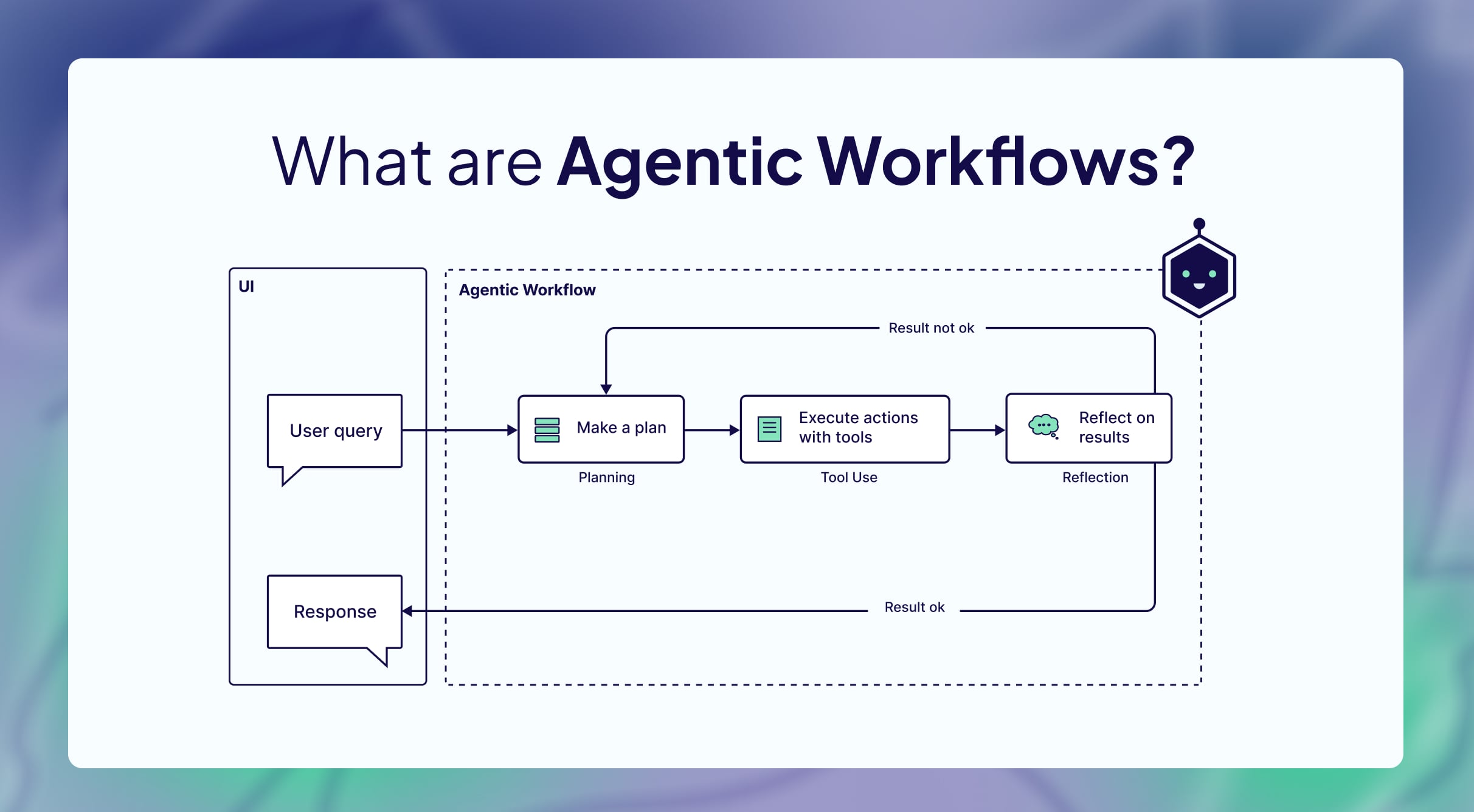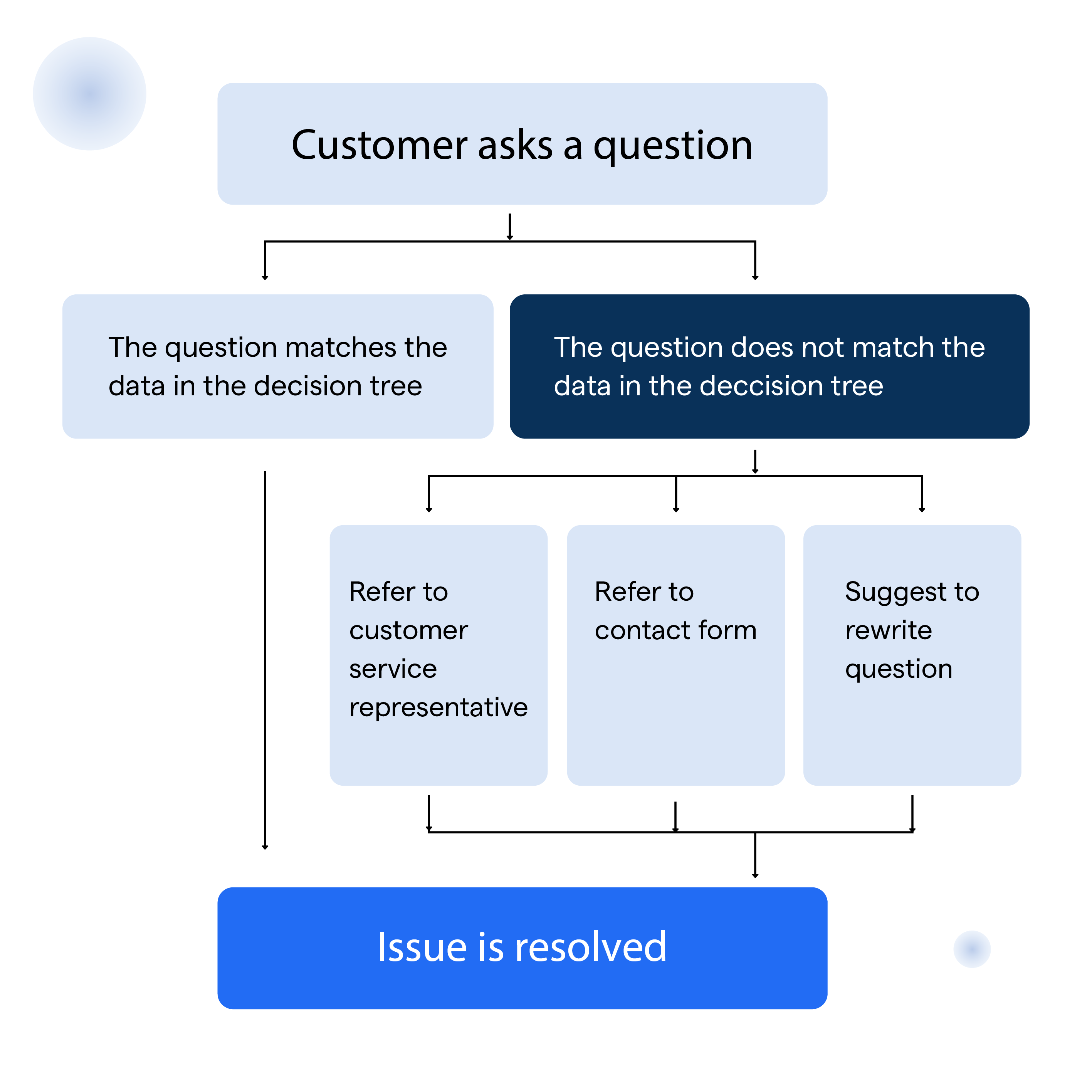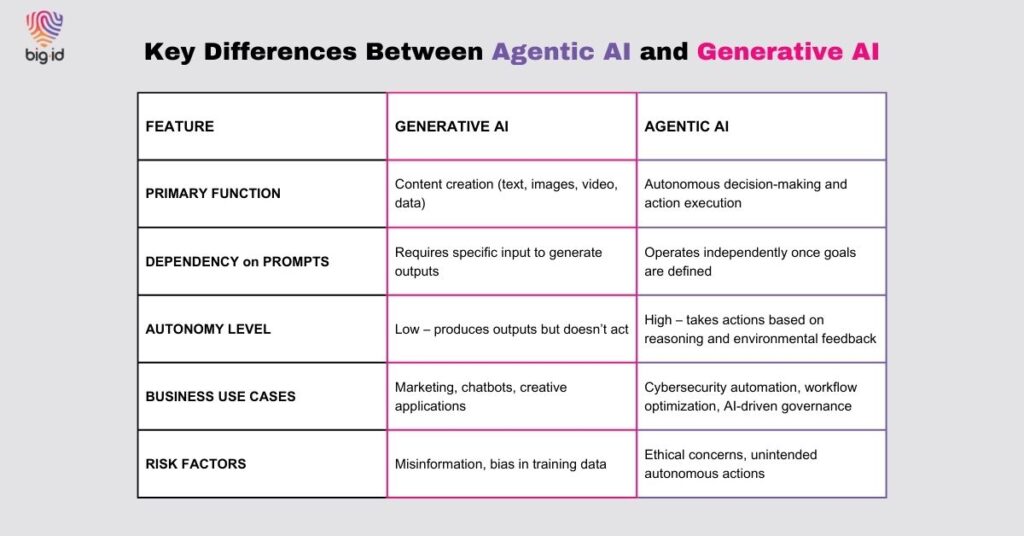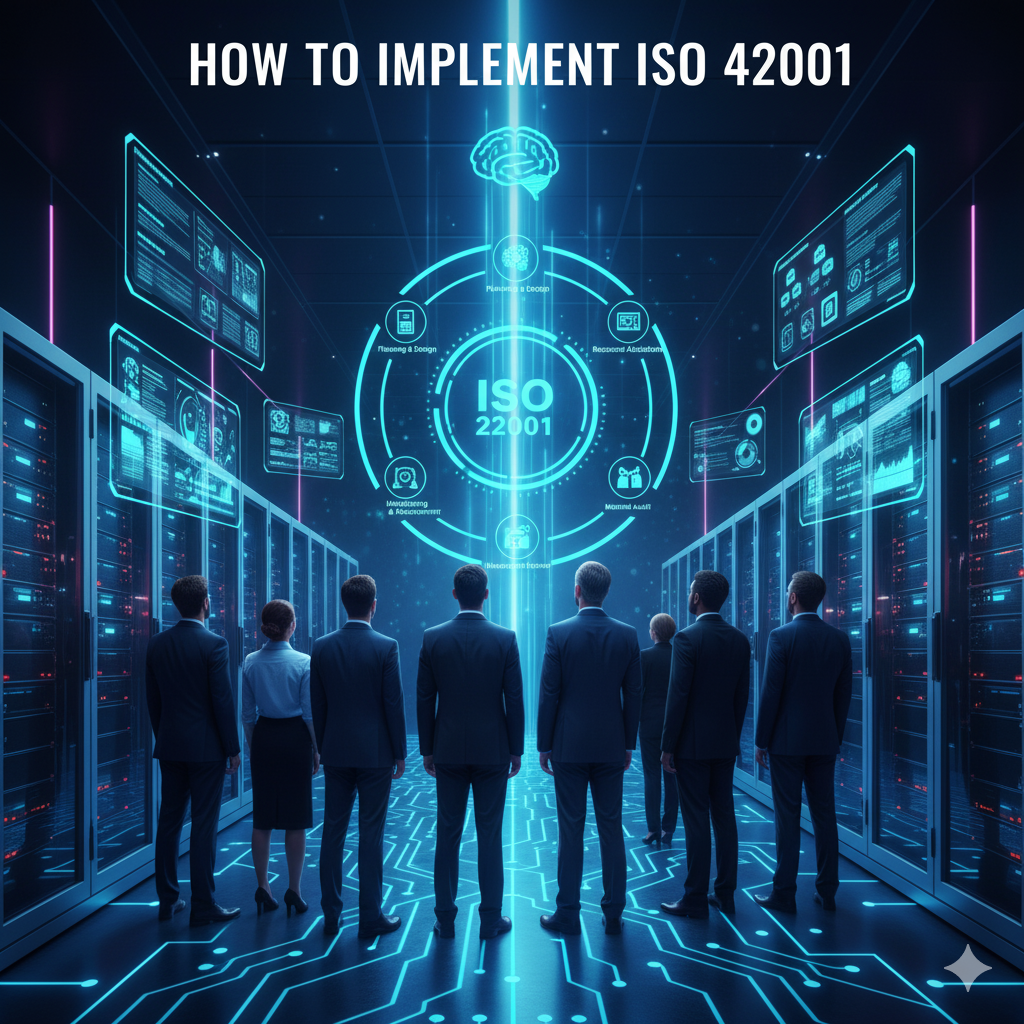Artificial intelligence has evolved into two distinct approaches that solve different business problems. Generative AI creates content like text, images, and code in response to prompts. Agentic AI operates autonomously to complete multi-step tasks and make decisions without constant human guidance.
The difference between these AI types affects how organizations implement them. Generative AI excels at creative tasks and content production but requires human oversight for each request. Agentic AI handles complex workflows independently but demands more sophisticated setup and monitoring systems.
Understanding when to use each technology helps businesses make informed decisions about AI adoption. Many enterprises now deploy both types together, using generative capabilities within autonomous agent systems to maximize efficiency.
Understanding Generative AI Technology
Generative AI refers to artificial intelligence systems that create original content including text, images, video, audio, or software code in response to user prompts. These systems use machine learning models to identify patterns within large datasets and generate new content that resembles the training data while maintaining contextual relevance to user requests.
The technology operates through deep learning algorithms that analyze vast amounts of existing content to understand relationships between different elements. Foundation models undergo training on massive volumes of raw data, often comprising terabytes of information from internet repositories and specialized datasets.
Pattern recognition forms the foundation of generative AI functionality, enabling systems to identify relationships and structures within training data. Deep learning algorithms process information through multiple layers, with each layer identifying increasingly complex patterns and relationships between concepts.

How Agentic AI Systems Work
Agentic AI represents artificial intelligence systems that operate autonomously to accomplish specific goals without requiring constant human guidance. Unlike traditional AI that responds to individual prompts, agentic AI can plan sequences of actions, make decisions independently, and adapt its approach when circumstances change.
These systems demonstrate intentionality by establishing explicit goals and working toward specific outcomes. They evaluate situations, consider multiple options, and select actions based on their analysis rather than following predetermined scripts.
The decision-making process includes forethought capabilities that allow systems to anticipate potential outcomes before taking action. Self-reactiveness enables these systems to monitor their own performance and adjust behavior based on results.

Multi-agent systems feature multiple specialized AI agents working together to accomplish complex objectives. Communication architectures facilitate coordination through various mechanisms including message queues, shared memory systems, or direct agent-to-agent messaging.

Key Differences Between AI Technologies
Understanding the distinctions between agentic AI and generative AI helps clarify which technology fits specific business needs. These two AI approaches operate differently and serve different purposes in organizational workflows.
Generative AI systems require human input for each task they perform. Users provide prompts or requests, and the system responds with content like text, images, or code. The system can’t initiate actions or continue working without additional human guidance.
Agentic AI systems operate independently once given an objective. These systems break complex goals into smaller tasks, execute multiple steps, and make decisions without constant human intervention.

Autonomy levels — Generative AI operates reactively by responding to user prompts and requests, while agentic AI operates proactively by identifying opportunities and initiating actions based on programming and objectives.
Decision-making approaches — Generative AI makes decisions about content creation based on patterns learned from training data, while agentic AI makes strategic decisions about which actions to take and when to take them.
Generative AI Use Cases and Applications
Generative AI systems create original content by analyzing patterns in training data and producing new outputs based on user prompts. These systems operate across multiple industries and departments, transforming how organizations approach content creation and development workflows.
Marketing teams use generative AI to produce written content at scale across multiple channels. The technology creates blog posts, social media captions, email campaigns, and product descriptions by processing input prompts and generating text that matches specified tone and audience requirements.
Software development teams utilize generative AI to accelerate coding processes across multiple programming languages and frameworks. Developers input natural language descriptions of desired functionality, and the AI generates corresponding code snippets, functions, or entire modules.
Business analysts use generative AI to create reports and analytical summaries from complex datasets. The technology processes raw data, identifies patterns and trends, and generates written explanations of findings in plain language.

Common generative AI applications include:
- Content creation for marketing materials and documentation
- Code generation and software development assistance
- Data analysis and business intelligence reporting
- Creative design support and concept development
- Automated customer communication drafting
Agentic AI Applications in Business
Agentic AI systems operate autonomously to complete complex, multi-step tasks without constant human supervision. These systems excel in scenarios requiring sustained decision-making, process coordination, and adaptive responses to changing conditions.
Enterprise workflow automation represents a primary use case where agentic AI transforms business processes by managing entire workflows from start to finish. Document processing systems analyze incoming contracts, extract key terms, route approvals to appropriate stakeholders, and update legal databases automatically.
Customer relationship management systems benefit from CRM agents that manage customer relationships through automated touchpoints and data analysis. Sales agents qualify leads by gathering information from multiple sources, scoring prospects based on predefined criteria, and routing qualified opportunities to appropriate sales representatives.

Supply chain agents coordinate complex logistics networks by monitoring inventory levels, predicting demand patterns, and optimizing delivery routes. Procurement agents evaluate supplier performance, negotiate contract terms, and identify alternative sources when disruptions occur.
Financial services utilize agentic AI for fraud detection agents that analyze transaction patterns, identify suspicious activities, and freeze accounts when necessary. Compliance agents monitor trading activities, file regulatory reports, and alert teams to potential violations.
Benefits and Limitations of Each Technology
Understanding the specific advantages and challenges of different AI technologies helps organizations make informed decisions about implementation. Each type of AI brings distinct capabilities and faces unique obstacles in enterprise environments.
Generative AI systems demonstrate exceptional proficiency in content creation across multiple formats including text, images, code, and multimedia production. These systems excel at automated brainstorming and creative inspiration by generating multiple content variations that serve as starting points for creative professionals.
Pattern recognition capabilities facilitate trend identification, anomaly detection, and predictive modeling across various business domains. Organizations achieve faster deployment timelines for generative AI implementations due to relatively straightforward integration requirements.
However, accuracy concerns represent the primary limitation of generative AI systems through the hallucination phenomenon. Mathematical proofs indicate that complete elimination of hallucination remains impossible due to fundamental limitations in how large language models function.
Agentic AI systems excel at autonomous workflow management across complex, multi-step processes. These systems can monitor databases, retrieve information from multiple sources, generate communications, and update records without human intervention.
Implementation challenges for agentic AI stem primarily from technical complexity and integration requirements. Organizations face significant obstacles including technical skills gaps, workforce resistance to change, and system complexity management.
Implementation Considerations and Selection
Selecting between agentic AI and generative AI requires understanding your organization’s specific requirements, existing capabilities, and operational goals. Both technologies serve different purposes and excel in distinct scenarios.
The technology selection process begins with evaluating current business processes and identifying specific pain points that AI could address. Generative AI works best for organizations that focus on content creation, creative assistance, and analytical tasks requiring human oversight.

Agentic AI suits organizations that manage complex workflows, require autonomous decision-making, and operate processes that span multiple systems over extended timeframes. Process automation requirements point toward agentic AI implementation for organizations managing multi-step workflows and customer relationship processes.
Technical infrastructure assessment determines implementation feasibility:
- Generative AI requirements — Computational resources for model operation, API connectivity for integration, and content management systems for output handling
- Agentic AI requirements — Complex infrastructure including multiple system integrations, database connectivity, and comprehensive monitoring capabilities
Budget planning differs significantly between technologies. Generative AI includes computational resource costs, API access fees, and ongoing operational costs for content generation. Agentic AI encompasses substantial investment in technical expertise, system integration development, and ongoing monitoring infrastructure.
Security and Governance Requirements
Enterprise AI governance creates a structured approach for managing artificial intelligence systems safely and effectively within organizations. This framework addresses the unique challenges that emerge when deploying AI technologies at scale.
AI governance frameworks establish clear policies and procedures for managing AI-related risks throughout the technology lifecycle. These frameworks typically include risk assessment protocols, decision-making authorities, and monitoring procedures that help organizations identify potential problems.
Current regulatory frameworks like GDPR and CCPA apply to AI systems, particularly regarding data privacy and protection. The NIST framework provides guidance for building trustworthy AI systems with seven key characteristics.

Generative AI security risks center on content integrity and data privacy. Hallucination represents a fundamental challenge where models generate false information with apparent confidence. Data privacy concerns arise from potential training data exposure and inadvertent sensitive information generation.
Agentic AI faces broader security challenges due to autonomous operation capabilities. Cognitive security threats include goal manipulation attacks, memory poisoning, and reasoning path manipulation. Execution integrity risks encompass prompt injection attacks and tool manipulation.
Frequently Asked Questions
Can agentic AI and generative AI work together in enterprise systems?
Yes, agentic AI and generative AI frequently work together within the same system. Agentic AI systems often incorporate generative AI components to enhance their capabilities.
An agentic AI system managing customer relationships might use generative AI to create personalized email content while the agentic system handles timing, recipient selection, and follow-up scheduling autonomously. The agentic system provides autonomous decision-making and workflow management, while the generative AI component handles content creation tasks.
What technical expertise do teams require for successful AI deployment?
Generative AI deployment requires expertise in API integration, prompt engineering, content workflow design, and quality assurance processes. Teams need skills in natural language processing, content verification procedures, and integration with existing business systems.
Agentic AI implementation demands significantly broader technical expertise. Teams require knowledge of machine learning, autonomous system design, multi-agent coordination, workflow automation, and complex system integration. Understanding cognitive architectures, memory management systems, and inter-agent communication protocols becomes essential for managing complex agent ecosystems.
How do implementation costs compare between agentic AI and generative AI?
Generative AI implementation costs vary based on the approach chosen. API-based generative AI implementations typically cost hundreds to thousands of dollars monthly, depending on usage volume. Organizations also budget for integration development, content review processes, and ongoing operational oversight.
Agentic AI implementations require substantially higher initial investments due to system complexity. Organizations must budget for specialized technical expertise, extensive system integration, multi-component architecture development, and comprehensive testing phases. Implementation timelines often span several months to years, particularly for multi-agent configurations.
Which AI technology provides better return on investment for businesses?
Generative AI typically demonstrates clearer, more predictable return on investment patterns. Organizations can measure benefits through content creation efficiency, time savings, and productivity improvements in creative and analytical tasks. Implementation timelines are shorter, and success metrics focus on measurable outputs.
Agentic AI may provide more substantial long-term value through comprehensive workflow automation and autonomous operation across multiple business processes. However, measuring and attributing these benefits proves more challenging due to the complexity of autonomous operations spanning extended timeframes. The choice depends on organizational needs and process complexity requirements.

